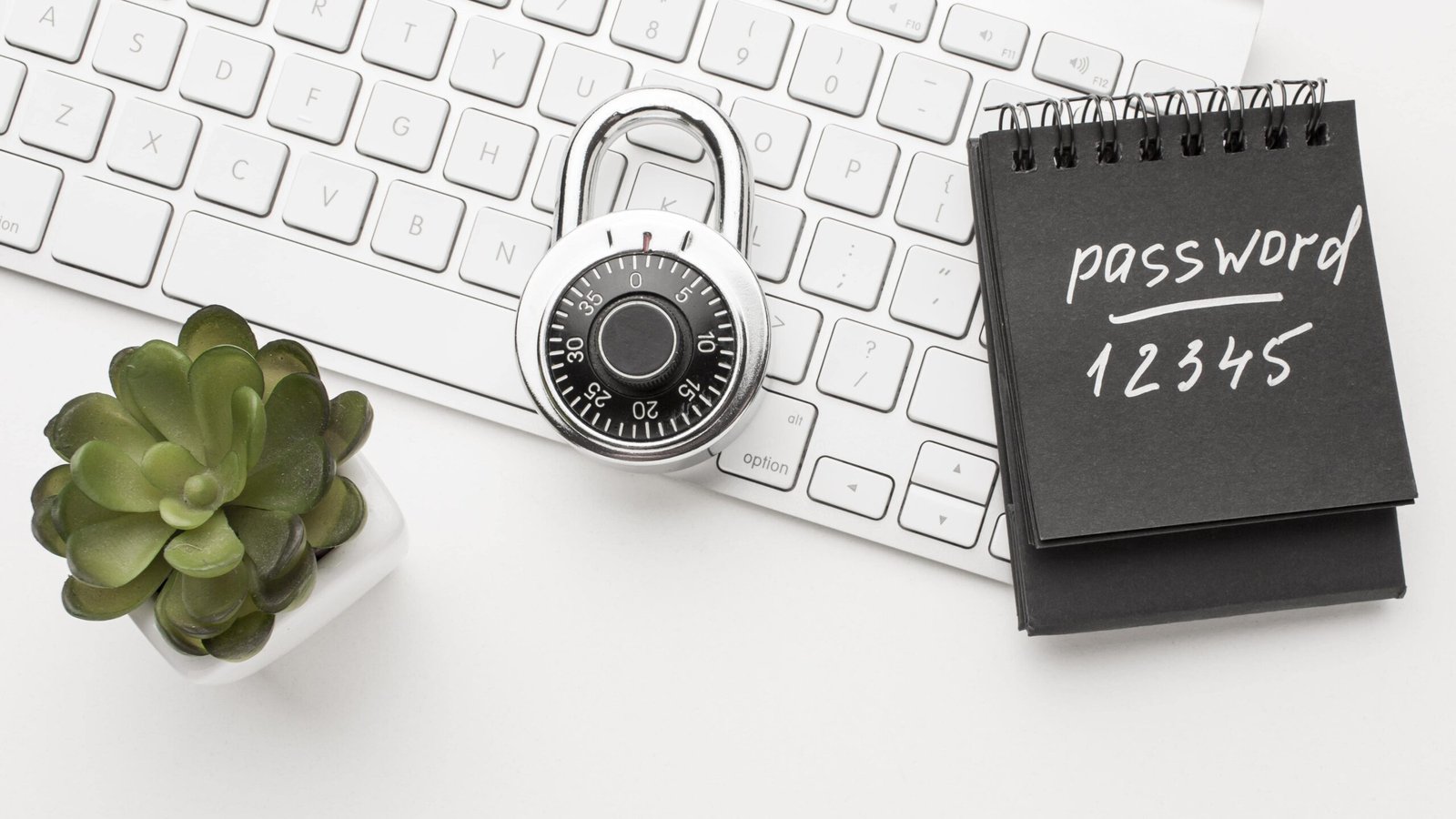Which Of The Following Best Describes Password Spraying?
Imagine, You’ve got a big keyring full of keys and a bunch of doors to open. Instead of using many keys on one door, you use just one key on every door until one swings open. That’s pretty much password spraying, but it happens on computers. It’s a sneaky hacker trick that turns the usual attack strategy upside down. Instead of hammering away at one account, they try the same password on lots of accounts until they hit the jackpot. They’re looking for a tiny crack to sneak through in our online world.
Password spraying is all about playing the odds but in a clever way. Hackers aren’t just banging on one door with a bunch of keys. Nope, they’re sneakier. They grab passwords that lots of people use and test them out on a whole bunch of accounts, hoping they’ll get lucky pretty quickly. It’s like they’re tiptoeing past the guards. Security systems usually watch for lots of wrong tries on one account, but this trick slips by because it’s spread out over many accounts. In the huge world of online accounts, this method is like a quiet wave you might not notice it, but it can cause a big mess.
What is password spraying?
Jumping straight to the point, password spraying is a hacker’s favorite trick because it’s simple and it works. Imagine this: instead of trying a bunch of keys on one lock, the hacker uses one key a popular password, and tries it on lots of different accounts. It’s a kind of forced entry, but it’s not about pushing hard in one place. It’s about spreading out the effort.
What’s clever about password spraying is how it flies under the radar. Cybersecurity systems usually look out for too many wrong tries on one account and ring the alarm bells. But password spraying gets around this by trying just once on lots of accounts, so it’s less likely to get caught. The hackers are betting that among all these accounts, a few people will have used easy-to-guess passwords that let them in. It’s like picking the low-hanging fruit, but don’t be fooled the damage can be big.
How does password spraying work?
Let’s break down how password spraying works. It’s a smart but simple trick. Even though we’re always told to pick strong passwords, a lot of us still use really simple ones like “123456,” “password,” or “admin.” This habit of choosing easy passwords is exactly what password spraying takes advantage of, turning our love for easy-to-remember passwords into a weak spot.
Here’s how it goes down: A hacker finds a list of usernames from the company they’re targeting, which isn’t too hard with all the information we all leave online. Then, they take some common passwords and try them out on all those usernames, one by one. They do it slowly and carefully, so they don’t set off any alarms. Security systems usually watch for a bunch of wrong password tries on one account in a hurry, but password spraying spreads out the tries, making it harder to detect.
The sneaky part about this trick is how quiet it is. By taking their time and trying passwords on lots of different accounts, hackers can sneak in without tripping any alarms. It’s like they’re playing a game of hide and seek online, moving slowly and carefully, and sadly, they’re pretty good at it.
Breaking Down Password Spraying

To get how password spraying works, let’s look at it step by step. Think of it as a sneaky dance, where every step is planned to stay hidden while looking for the easiest way in.
First up, the hackers do their homework. They collect usernames by tricking people, sending fake emails, or just picking up information that’s lying around on social media or job sites. This part is very important. Unlike other attacks where hackers keep trying lots of passwords on one account, password spraying needs a long list of different accounts to try.
Next, the hackers pick their passwords. They go for the ones a lot of us end up using, not just guessing but using facts from past hacks and studies about how people choose passwords. These are their “keys,” picked because they have a good chance of working on the “locks” (or accounts) they’re targeting.
The actual hacking is done slowly and carefully. They try each selected password on all the usernames they’ve gathered, making sure not to hit the same account too many times too fast. This slow pace is on purpose, to avoid getting caught by security features that lock accounts or send alerts after too many wrong tries.
What makes password spraying smart isn’t about using force or complicated hacking tricks. It’s about being clever in using simple mistakes people make, like picking easy passwords or companies not having strong security rules. It shows that sometimes, the biggest threats in cybersecurity are the smart uses of the simplest slip-ups.
Why It’s a Go-To Method for Cyber Crooks
Password spraying is a big hit with cyber crooks for a few good reasons, making it a top choice in their bag of tricks. What makes it so appealing is how simple, effective, and sneaky it is, which means it’s a strong option that’s also easy to get into.
Firstly, its simplicity and ease of use make it a popular choice for attackers, no matter how much they know about hacking. They don’t need fancy hacking gadgets or a lot of technical knowledge. Just armed with a bunch of common passwords and some possible usernames, even newbie cyber crooks can start making trouble, making it a go-to method in the shady online world.
The success of password spraying comes from taking advantage of a common problem: people often choose passwords that are easy to remember, even though we’re always told not to. This bad habit means there are plenty of chances for password-spraying to work. Instead of trying to crack one account, hackers play the numbers game and try the same few passwords on many accounts, which ups their chances of getting in.
The sneakiest part about password spraying is how it flies under the security radar. By not hammering away at one account too many times in a row, it avoids setting off the usual alarms like account lockouts or security warnings. This means hackers can keep trying without being noticed, often until it’s too late and they’ve already gotten into an account. In the cybersecurity world, being able to sneak around unnoticed is a big deal, giving hackers the upper hand by letting them check out security quietly.
All these points together make password spraying a tough challenge for cyber defenders. It’s not just a hack; it’s a smart use of our own simple mistakes and the gaps in how organizations protect themselves, keeping it a constant threat in the world of online security.
Spotting Signs of a Password Spraying Attack

Noticing a password-spraying attack is a bit like trying to spot a sneaky animal in the wild; you need to be alert and know what small signs to look for. Even though password spraying tries to stay hidden, there are still clues that can tip off organizations and people that an attack might be happening.
A big clue is if there’s a sudden bump in wrong password entries across many different accounts, especially if it happens bit by bit over time and the wrong passwords are ones that lots of people tend to use. Password spraying doesn’t just hit one account hard; it leaves a wider but quieter trail. Security folks need to keep an eye out for things that don’t match up with the usual, like many accounts getting the wrong password tries with the same password, or a bunch of tries that use passwords a lot of people pick.
Another clear hint is if people start getting surprise emails asking them to reset their passwords or saying their accounts are locked, even though they didn’t ask for this. If users start saying they’re getting these out of the blue, it could mean a hacker is trying to get into lots of accounts with the same few passwords.
Also, if more people start complaining that they can’t get into their accounts, it might be a sign of a password-spraying attack happening. Because the hacker is trying common passwords on different accounts, sometimes the real owners of those accounts might accidentally lock themselves out by entering their correct passwords after the hacker’s wrong tries.
For organizations with fancy security setups, other clues might include logins from places or at times that don’t make sense. If the security records show someone trying to get in from far-away places or at strange times, it might be a hacker trying their luck.
Catching these clues early is very important for you. It lets organizations act fast to stop hackers before they get in, reducing the chance of any serious damage. It’s like putting together a puzzle – figuring out what the hacker is planning and then quickly beefing up security to block this sneaky but powerful online attack.
Best Practices to Dodge the Spray
To dodge the risks of password spraying, it’s like setting up a strong security net for your personal and work online information. You want to beef up your online security with methods that not only block these attacks but also help everyone think more about staying secure online.
The first big step in keeping secure is to use strong and different passwords for everything. Pushing for or making it a rule to have complex passwords that aren’t easy to guess can cut down on these kinds of attacks. Imagine making your passwords like tough puzzles, not just simple keys.
Adding multi-factor authentication (MFA) is like putting an extra guard at the door. Even if a hacker figures out a password, MFA asks for another proof, like a code from a text or an app, making it hard for the wrong person to get in.
Teaching users about good security habits is key to making defenses stronger. Running programs that show why it’s bad to use easy passwords and how important security steps are can turn users from weak spots into strong defenders of the organization’s security.
Using rules that lock accounts after too many wrong password tries can also scare off attackers. But it’s important to get the balance right so it doesn’t stop users from getting to their accounts or accidentally help attacks that aim to shut down services.
Keeping an eye on who’s trying to log in and when can help spot trouble early on, especially if someone’s trying to guess a bunch of passwords. If you notice logins from places or times that just don’t make sense, or from gadgets that aren’t usually used, that’s your cue something might be up. This way, the security folks can jump into action quickly and stop any mischief before it gets out of hand.
And hey, let’s not forget about some of the fancy tech out there like artificial intelligence and machine learning. These smart tools can up your game in spotting when something’s not quite right, acting like a super-smart guard dog that’s always on the lookout.
By bringing these smart moves into your game plan for keeping things safe, you’re turning your online space into a tough nut to crack. It’s all about staying one step ahead and being ready for anything, rather than just waiting for things to go sideways.
In conclusion
When we talk about keeping our online world secure, beating password-guessing tricks is a big deal. It’s not just stopping one kind of trouble; it’s about making our online walls stronger against all sorts of online attacks. This trick might seem simple because it plays on the easy mistakes people make, like using easy passwords. But really, it’s a reminder of the tug-of-war between the online attackers and those working hard to keep our digital lives secure. By stepping up our security game, teaching everyone to be more aware, and using some smart technology tools, we’re not just fighting off password guessing. We’re building a much tougher barrier against all the sneaky moves online crooks might try. It shows we’ve got to be flexible and tough in this digital world, making our dedication to staying secure our best weapon against these crafty online enemies.
FAQs
What exactly is password spraying?
Password spraying is a cyber attack method where hackers use common passwords to try and gain unauthorized access to a large number of user accounts, instead of attacking a single account with many passwords.
Why do cybercriminals use password spraying?
Cybercriminals favor password spraying because it’s less likely to trigger security alerts. By using common passwords across many accounts, they can stay under the radar and increase their chances of a successful breach.
How can I tell if I’m a victim of password spraying?
Signs include unexpected account lockouts, numerous failed login notifications, and unusual activity alerts from different locations or devices.
What makes password spraying different from brute force attacks?
Unlike brute force attacks that focus on cracking one account by trying many passwords, password spraying targets multiple accounts using a few common passwords, making it more stealthy and widespread.
How can I protect myself from password-spraying attacks?
Strengthen your defense by using unique, complex passwords, enabling multi-factor authentication (MFA), and being vigilant about security notifications and account activity.







